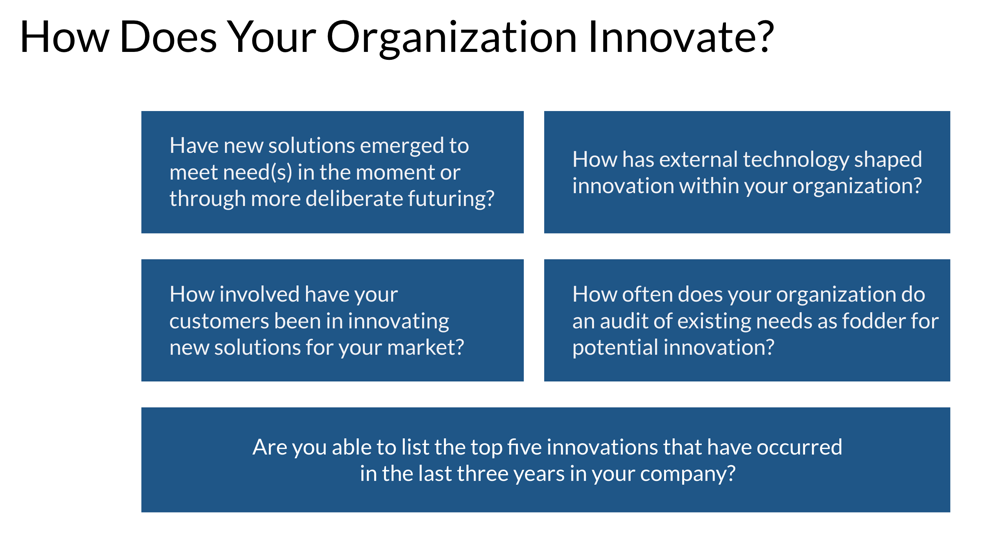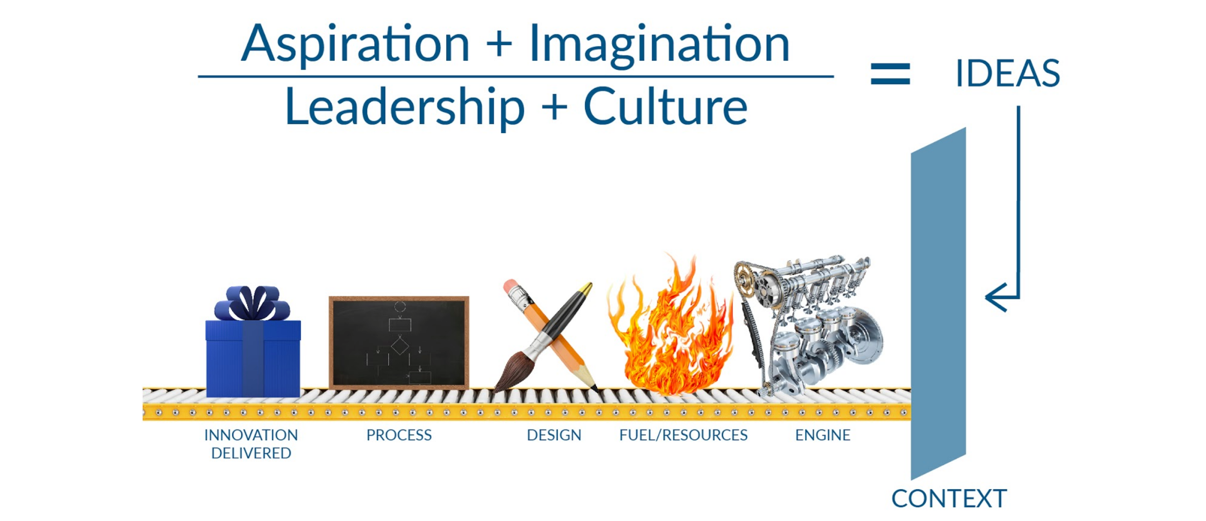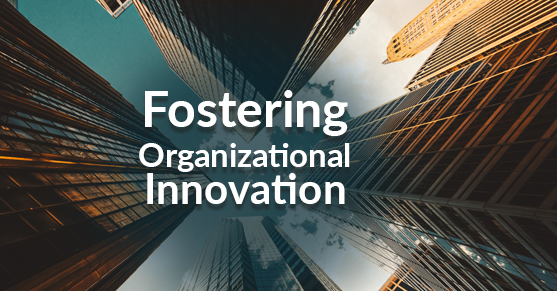Organizational innovation does not just happen in a vacuum. Some things need to happen, and those things need to have context and buy-in from the people who make it happen. Your organization must have a corporate culture that supports innovation, which inherently means it has to be okay to make mistakes and put forward ideas that may seem nonsensical at first glance. The good news is that you can (likely) project how innovation will occur in your organization based on how it’s been approached in the past. Read on to learn from how your organization’s previous innovation initiatives.

Your Organization and Innovation
Innovating new solutions is usually unpredictable — it’s chaotic, potentially in response to a crisis, and can bring frustration as new considerations surface in the process. In those moments, it’s vital to hold on to the bigger vision. It can also be helpful to consider how innovation has shown up in your organization previously. To see how your organization has handled innovation in the past, consider the following questions.

– Have new solutions emerge to meet needs in the moment or through more deliberate futuring?
– How has external tech shaped innovation in your company?
– How involved are your customers in innovative new solutions?
– How often does your organization do an audit of existing needs as fodder, or fuel, for potential innovation?
– And, are you able to list the top five innovations that have occurred in the last three years in your company? If you can do that, do it. And then share that list with your colleagues and peers to acknowledge the power of innovation in your company. That can also not only inspire them to say, “Yes, we’ve done that but what else can we do? What’s next?”
When you have established an environment that supports or is at least open to doing things in a new way, innovation is a natural outcome.
The Ingredients and Formula for Innovation
Before you read ahead to the following image (dang, you looked, didn’t you?!), you should know that you’re right about this graphic. It IS a napkin drawing made pretty by our talented graphics team here at XTIVIA. They wanted to make it even more professional, so I need to clarify that I asked for them to restrain themselves and just polish my stick drawings, so this gift of visual “eye candy” is on me. (You’re welcome.) 🙂

The above represents my thoughts on the ingredients, formula, and process of organizational innovation. Innovation is a journey that begins with a culture of innovation that leadership supports, endorses, and encourages; from there, aspiration and imagination can flourish to create fresh ideas. So Aspiration + Imagination over (supported by) Leadership + Culture yields new Ideas.
The ideas get put through filters of context. As in, how does this idea apply to your business? How will it deliver greater value to your customers? What is the potential ROI, and how will it be perceived in the market? Is anyone else doing it already? Ideas are meaningless outside context and subsequent action. The Contextualized Idea then goes into the Engine that serves as the mechanism to put the pieces together. That Engine needs Fuel/Resources to progress. Add a bit of Design to package the idea, add Process to streamline delivery, and boom! You’ve turned innovation into a deliverable for your customers (which may be in-house as well, but I digress).
For this formula to work and make innovation become a transformational result, it has to be okay for people to question the status quo. It has to be okay to dream big, to think outside the box, to ask questions, to conduct candid assessments of what is today, to invite dialogue that may skewer some sacred cows. These things have to be accepted to foster the magical new result that comes from innovation.
This graphic does not even really show that there is a testing process or that customers are invited to contribute feedback via research and development or anything truly detailed, for that matter. However, you get the idea: you start with the vision, the aspiration, then add imagination supported by leadership and a positive growth culture to surface the idea.
Ideally, your organization’s business targets are known throughout your organization. That should then foster a culture of innovation as it supports innovators aligning their actions to support those goals.
There are different methods you can use to incorporate innovation into the fabric of your organization (maybe you want to establish an innovation committee). Maybe you want to try having a Genius Hour. Perhaps you want an annual day devoted to employees developing side projects on the job.
You could also create a team dedicated to innovation as a way to facilitate collaboration. This team should have people from different business units, teams, and departments all working together because that helps the innovation become blended into all aspects of your culture and give different perspectives throughout the process.
Your goal is to think about how to best weave innovation into your corporate culture, get input, and, ideally, buy-in from others, and then implement what is decided so you can get innovation started in your company.
Adding Innovation to Your Growth Plans
To add innovation to your organizational plan, there are two invaluable resources you need to consult to be most effective. The first best resource is your customers. What are your customers looking for? What are they talking about? What are their needs? What’s happening in your industry?
The second best resource is your employees because your in-house users are the front line and a microcosm for what’s happening in the greater ecosystem of your business. What are they seeing? What types of questions are they answering? What problems are cropping up in their workflow? Where do they see customers could gain added value from your solutions?
Bonus: by inviting input from employees, there is collaboration in making a bigger difference. When people know they are making a difference, they are generally happier. And when people are happy in their jobs, they like to stay in them. Plus, doing something new is exciting and encourages learning, which keeps people engaged. So, innovation is also an employee retention strategy.
When you have a culture that supports breaking or questioning the status quo with creativity, you’re going to potentially have some really great innovation emerge in and for your organization.
One last note: when it comes to implementing innovation, it often means leveraging technology in some way to automate workflows and make the most of human time in delivering customer value. When you find yourself in that place — and you will — know that XTIVIA‘s in-house experts are here to help implement, integrate, and innovate the technology you need to make your innovation sustainable. No pressure! We really do just want to help you achieve your business goals.

